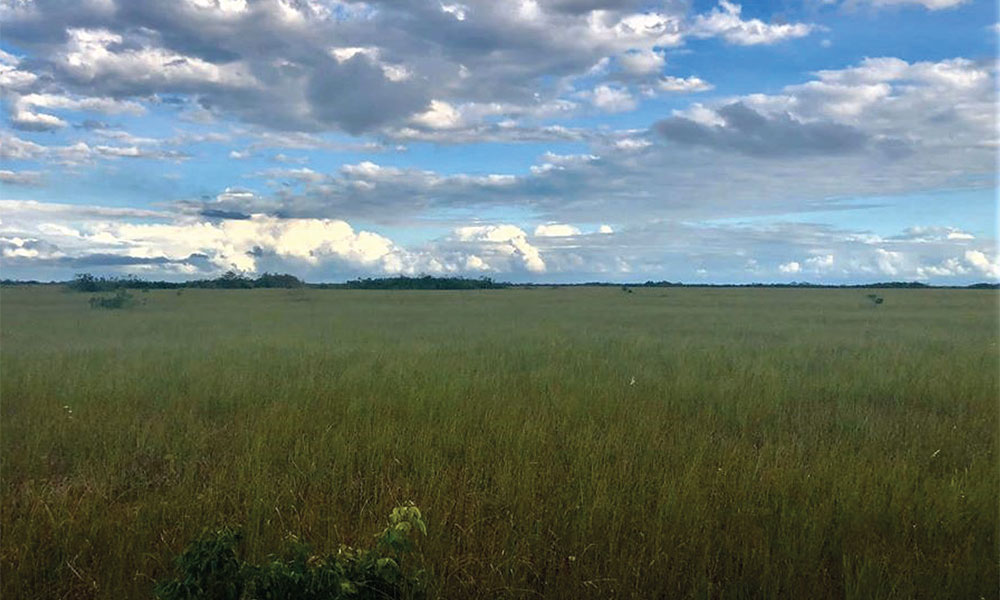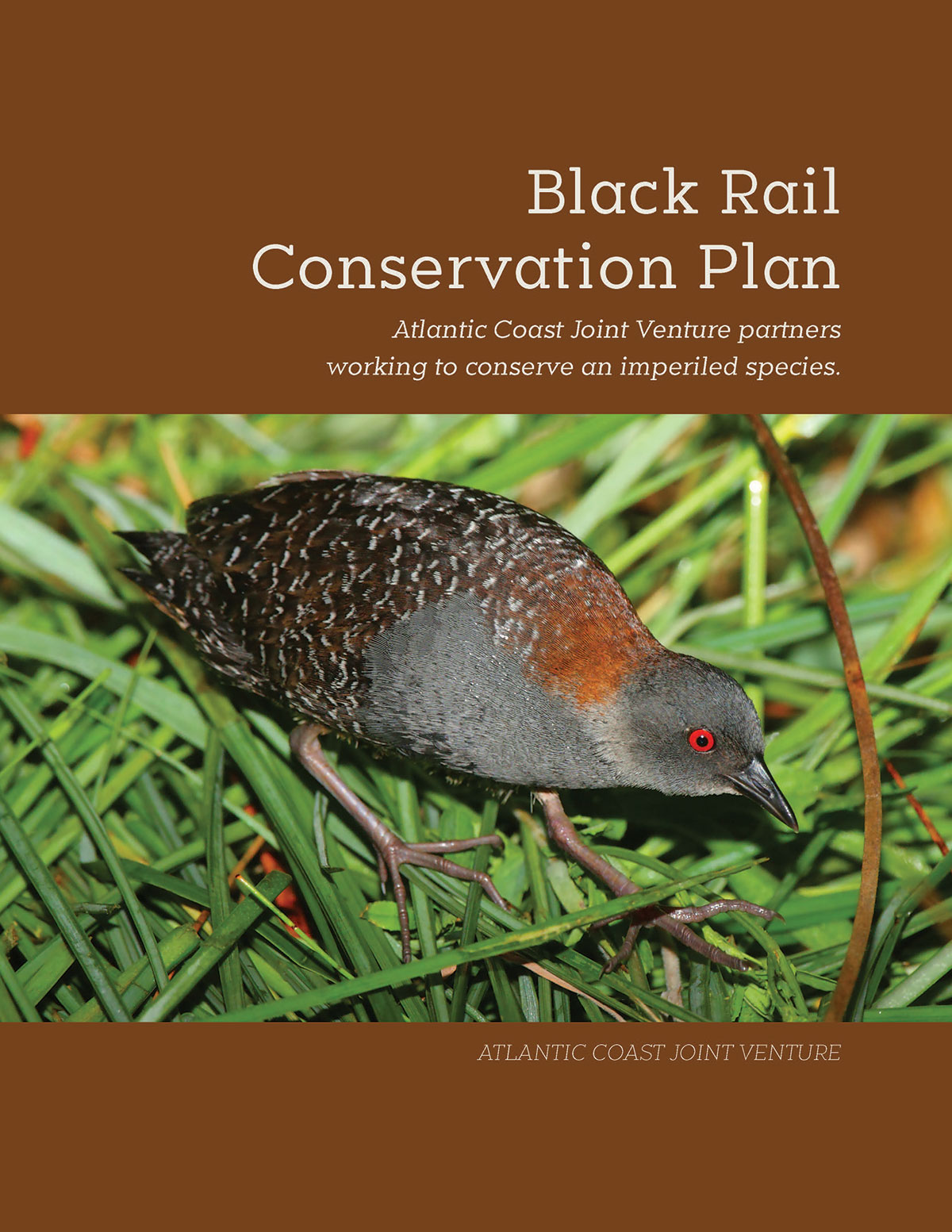Black Rail
Population Status
Eastern Black Rail populations have declined by more than 90% in their Atlantic Coast range since the 1990’s. They have disappeared from many historical strongholds and the Atlantic Coast breeding range has retreated south by more than 280 miles (from Massachusetts to New Jersey). This rapid decline (~ 9% annually) and the Black Rail’s shrinking range has triggered a petition for federal listing.
Threats
Eastern Black Rail populations historically suffered from widespread conversion and alteration of wetland habitat. Scientists believe that recent declines are being driven by sea-level rise and nest inundation from higher tidal flooding. Black Rails are ground nesters and even small increases in preferred water levels appear to prevent breeding activity.

Black Rail (Laterallus jamaicensis)

Our Objective
Our goal is to restore a sustainable population of Black Rails in the ACJV.
Population Objective
The most recent population estimate for Black Rails within the ACJV is 355-815 pairs. Our goal is to restore a sustainable population of Black Rails in the ACJV (More details on how we set this population objective may be found here). To achieve this we have set the following objectives:
- By 2024: Stabilize the population above 300 pairs to prevent additional loss of genetic diversity in at least four population centers (NJ, NC, SC and FL) that currently support the greatest abundance of breeding Black Rails.
- By 2056: Grow the population to 2,500 pairs across at least five population centers in current and historical locations.

Achieving Our Objective
Eastern Black Rail habitat requirements are a subtle mix of factors no longer common–or readily available–in many places. It is critical that partners rapidly restore degraded wetlands and/or develop managed or created wetlands with suitable conditions (perennial shallow water, dense herbaceous vegetation, abundant invertebrates and seeds) in salt and freshwater habitats, in order to achieve our population objectives. Priority actions will vary from site to site and include:
- the use of water control structures to maintain appropriate vegetation and water depth in impounded wetlands;
- prescribed fire to set back woody vegetation;
- creation of freshwater sloped wetlands or wet meadows;
- use of dredge spoil or other materials that provide higher nesting areas in tidal marshes; and
- control of invasive plants in high marsh habitat.
With swift action by partners across the range, we have the opportunity to turn a conservation crisis into a conservation success story.
The Black Rail Conservation Plan
The Black Rail Conservation Plan outlines the highest priority strategies needed to conserve the Eastern Black Rail throughout its former range on the Atlantic and Florida Gulf coasts. The plan sets population and habitat targets for the short and long term with a goal of creating sufficient habitat to support a sustainable population of Black Rails within the ACJV area. This plan strongly emphasizes both the short-term need to create more non-tidal habitat that is safe from the threats of sea level rise and tidal flooding as well as the longer term need to facilitate marsh migration to provide future Black Rail habitat in tidal marsh systems..
The Black Rail Management Guidance Document
The Black Rail Management Guidance Document builds on the Black Rail Conservation Plan by focusing on removing barriers to management action. This document prioritizes landscapes for management, develops a strategy for staging activities, compiles a set of management endpoints, reviews techniques that may move habitats toward target conditions and links management needs to priority landscapes.


